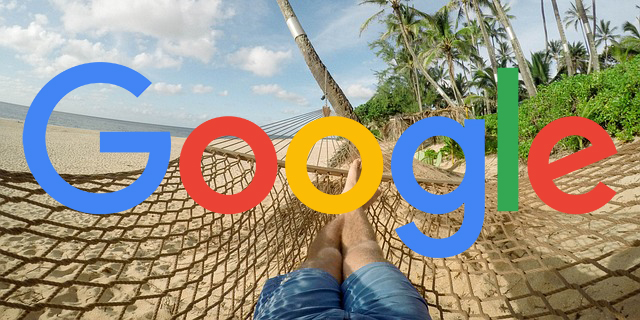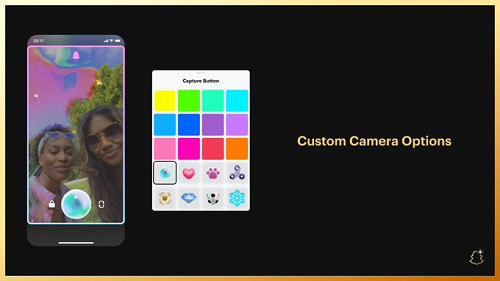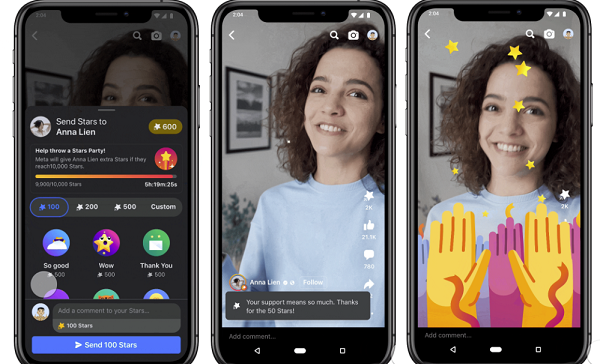MARKETING
5 Optimization Tips to Maximize Sales This Holiday Season

Advertisers will be facing a shorter time frame this year for the usual holiday hustle and bustle. However, eMarketer is still forecasting total US sales to climb 3.8% making it the first-ever trillion-dollar holiday season. According to Forrester, 2019 online holiday sales will reach $138 billion.
As advertisers, we need to take advantage of these predictions and position ourselves for an outrageously successful holiday season. To set yourself up for success, we’ve highlighted 5 tips to maximize your online sales.
1. Images and Video
Because your users cannot feel, touch, test, or try out your products, high-quality photos are crucial. A user needs to be confident in their purchase decision, especially when purchasing online, and being able to zoom in and see the details of the product they’re purchasing could make or break their decision. Consider what happens if they try to find better product images on the web just simply to get a better idea of what they might be purchasing, and they stumble across a better deal. Don’t let this happen to you!
Product images are extremely important, but it’s just as important to show off your hero shots or promotional images as well. Entering the holiday season, you want to stay relevant and purposefully target those holiday shoppers. Avoid using stock imagery. Create your own holiday imagery that will keep your customers engaged and create likability and credibility. Also, keep in mind the creative you’re using in your advertisements. You want to remain consistent so that users’ experiences are uninterrupted, and they feel a smooth transition from the ad through to the site.
It’s important to think about the video that you make available to your customers as well. Do you have video of your product in action? Consider utilizing this on your product pages but also use this material in your ads; intrigue your users by the use of the products and leave them wanting to learn more about it. I can’t count the number of times I’ve seen video advertisements on Facebook of hair products (specifically L’ange) being used by brand reps and now I own three of their hair styling tools. This is because they have great holiday deals (see tip #3) and because the videos truly helped me learn how to do my hair and got me excited to try new things. Fun fact, or slightly embarrassing, – I’ll let you choose – I never would curl my own hair because I was terrible at it. That is, until I stumbled across these ads and was repetitively shown videos of brand reps curling their hair. Now, I have a scar from burning myself, despite also having a heat-protectant glove. BUT, in all seriousness, thanks to the help of these videos I’m able to curl my hair on a regular basis.
2. User-Generated Content
Going into the holiday season, find the time or resources to look for and utilize user-generated content. Of course, be sure you have permission prior to sharing or using any of this content. Think about the credibility and trust you could build when you’re speaking on behalf of your customers rather than trying to sell it yourself. There are a number of things you can do with user-generated content.
- Images
- Video
- Testimonials
- Website or landing page copy
See what people are posting on Facebook or Instagram and use those to your benefit. These images will look even more natural and may actually reduce the work your team has to put in to create your own images. Below is a perfect example! Someone I went to high school with simply posted pictures of her daughter’s birthday party and, as you can see, Party City asked for permission to use this photo for marketing purposes. It’s as simple as that!

Many brands have brand representatives creating images, videos, their own sponsored material, etc. These videos are the exact videos I was referring to in tip #1. Get permission to utilize this content and place some of these helpful videos throughout your site where people are going to purchase. Heck, use them as testimonials!
Speaking of testimonials, browse through your brand’s Facebook page or Instagram posts for testimonials within the comments. Sure, there’s a review section within Facebook but taking the time to see what people are commenting should provide you with authentic testimonials. Taking a brief side-step – I think it’s important to also ensure you’re responding to these comments when necessary. Let your customers know you hear them and you’re taking action. That’s how you’ll build trust, keep users coming back, and show new customers that you care and you’re putting them first.
Lastly, consider the content throughout your site. It’s extremely easy to write a paragraph, or page, full of jargon. As employees or advertisers of a brand, there’s a language and a way you speak about the brand. However, your users or customers probably don’t understand your product or service in the same terms or language that you do. Therefore, it’s important to keep things simple. Use the comments from your customers, whether it’s from reviews, testimonials, Facebook posts, or Instagram stories, and use that language in your content. Talk to your customers the way they will talk about your product. Take some work off of your team, minimize the need to create copy from scratch, and take advantage of user-generated content.
3. Discounts & Promotions
As we prepare for the holidays, customers will be expecting deals. Promos. Discounts. Whatever we can offer them, they’ll be searching for it. Utilize the imagery we spoke about before to highlight the current or upcoming promotions and be sure that these align with what’s being advertised. It’s crucial to make sure that your advertising messaging and promotions match what’s being promoted on your site at that time. It’s easy to miss this around the holidays as things get busy and many ads are in motion, promotions are changing, etc. But if a user gets to the site and doesn’t see messaging related to that 40% off promotion that was in the ad they just clicked, they’re likely to bounce and now you’ve wasted money on that click. Check out the example below that I saw many times this week, from different brand representatives.


From the ad, you can see that she highlights “up to 76% off” but once you open the site, the first thing you see if “up to 80% off.” I don’t think this is a huge concern but a small example of mismatched messaging. This is also a great example of holiday promotion imagery within the hero images. There’s no way a user will miss this sale.
There are a few less-common things to keep in mind regarding promotions and discounts around the holidays.
- A lack of Black Friday deals
- Your only sale of the year
- Urgency
I suppose you could say these could all go hand-in-hand. If you’re an online retailer that either doesn’t have a Black Friday sale or only has a sale once a year, I think it’s important to call that out to your customers. Set expectations for the lack of sale so they don’t wait to purchase, expecting a sale, and potentially miss out or decide not to purchase all together. If this is the only sale that happens, once a year, remind them of that to create that sense of urgency. Below is a recent example I stumbled across as my husband and I were preparing for Christmas.

The reason I felt it was important to bring this idea to light is because of a few companies I follow on Instagram for children’s products. I discovered Nugget Comfort in the last year or so through another company on Instagram and knew that was what my husband and I were going to get the kids for Christmas. Though I’ve known of the company for a while now, I only started following them on Instagram recently. I’m so thankful I did because they announced their release calendar in October for all of their new prints and restocks of previously sold-out prints. With the transparency that they do not have Black Friday sales and knowing that these would be limited-edition prints, this created a great sense of urgency. Therefore, even though I’ll have to wait 2 months for Christmas, I set my alarm and purchased when my print was released so I knew I wouldn’t miss out.

Here’s another great example I came across this week. This company has decided to do Black Friday deals all month long with different sales each week. Many of their products are also limited-edition colors and styles, so once they’re gone, they’re gone. As you can see below, each week they will be putting some of their limited-edition colors on sale. They’ve made it clear that these sales will be Monday and Tuesday of each week, with different colors, and once the sale is over, those colors will be taken off the site.


Not only do they do a great job of creating urgency, but this is also a great way to get even more revenue as a company. Because colors will be taken off the site each week, customers will likely make multiple purchases throughout the month of November rather than having the ability to wait and purchase all at once.
4. Mobile
Mobile, mobile, mobile. At this point, I sense this is a buzzword. But I think it’s still a work in progress and something that needs attention. As we’ll discuss in tip #5, the purchase process needs to be easy. Specifically, for mobile, the process shouldn’t cause frustration or uncertainty. It needs to be mobile-friendly. A user should feel just as confident making the purchase from their phone as they would from their computer. A number of my completed purchases today come from advertisements I’ve clicked on through Facebook and the process is made so easy, they get me every time. In instances where I don’t purchase, unfortunately rare, I either don’t have my debit card near me, or the process has created a sense of hesitation or friction that I’ve paused and not completed the purchase. This type of interaction is what you want to avoid. Quick things that come to mind:
- Subscriptions: make it easy to cancel or crystal-clear how to cancel
- Guest checkouts: have them – don’t force account creation or login (@Target, you’re killin’ me)
- Expensive products: create a way to “email to cart” or “save cart” so users can easily continue their purchase from their computer
- Keypad: be mindful of the type of field a user is in and give them a numeric keypad when applicable
- Phone number: if it’s easier to place an order over the phone for a larger ticket or complex items, make it easy to call for users at any stage
5. Checkout Experience
Keep it simple. Eliminate distractions. Improve usability. Checkout is the last place you want to lose a customer when they’re THIS close to completing their purchase. Don’t make it easy for them to leave the checkout. Eliminate the navigation and create a sense of urgency to motivate them to complete the transaction. Do not encourage them to go searching for coupon codes. Let them put in the effort to locate this field if they already have a coupon code but don’t flash it in front of their faces so that they go on the hunt for one. I’ll say it again – allow for guest checkouts. People don’t want to be forced to create an account or login. They want simplicity. Lastly, pay attention to your cart expiration. Don’t make a customer work harder to re-add things to their cart just because their cart expired. Keep their items in their cart so they’re ready to check out when they come back. (I feel like more should be added here or a better way to end this section)
Final Thoughts
I hope this gets you just as excited as I am to start thinking about new ways to maximize your holiday sales. Though this is a great way to get ahead for the holidays, don’t let this stop you from taking these tips and applying them throughout the year!
After you’ve prepared for this holiday season, check out these predictions for online marketplaces in 2020 as you begin to prep for the new year and new opportunities!
MARKETING
Tinuiti Marketing Analytics Recognized by Forrester

Rapid Media Mix Modeling and Proprietary Tech Transform Brand Performance
Tinuiti, the largest independent full-funnel performance marketing agency, has been included in a recent Forrester Research report titled, “The Marketing Analytics Landscape, Q2 2024.” This report comprehensively overviews marketing analytics markets, use cases, and capabilities. B2C marketing leaders can use this research by Principal Analyst Tina Moffett to understand the intersection of marketing analytics capabilities and use cases to determine the vendor or service provider best positioned for their analytics and insights needs. Moffett describes the top marketing analytics markets as advertising agencies, marketing dashboards and business intelligence tools, marketing measurement and optimization platforms and service providers, and media analytics tools.
As an advertising agency, we believe Tinuiti is uniquely positioned to manage advertising campaigns for brands including buying, targeting, and measurement. Our proprietary measurement technology, Bliss Point by Tinuiti, allows us to measure the optimal level of investment to maximize impact and efficiency. According to the Forrester report, “only 30% of B2C marketing decision-makers say their organization uses marketing or media mix modeling (MMM),” so having a partner that knows, embraces, and utilizes MMM is important. As Tina astutely explains, data-driven agencies have amplified their marketing analytics competencies with data science expertise; and proprietary tools; and tailored their marketing analytics techniques based on industry, business, and data challenges.
Our Rapid Media Mix Modeling sets a new standard in the market with its exceptional speed, precision, and transparency. Our patented tech includes Rapid Media Mix Modeling, Always-on Incrementality, Brand Equity, Creative Insights, and Forecasting – it will get you to your Marketing Bliss Point in each channel, across your entire media mix, and your overall brand performance.
As a marketing leader you may ask yourself:
- How much of our marketing budget should we allocate to driving store traffic versus e-commerce traffic?
- How should we allocate our budget by channel to generate the most traffic and revenue possible?
- How many customers did we acquire in a specific region with our media spend?
- What is the impact of seasonality on our media mix?
- How should we adjust our budget accordingly?
- What is the optimal marketing channel mix to maximize brand awareness?
These are just a few of the questions that Bliss Point by Tinuiti can help you answer.
Learn more about our customer-obsessed, product-enabled, and fully integrated approach and how we’ve helped fuel full-funnel outcomes for the world’s most digital-forward brands like Poppi & Toms.
The Landscape report is available online to Forrester customers or for purchase here.
MARKETING
Ecommerce evolution: Blurring the lines between B2B and B2C

Understanding convergence
B2B and B2C ecommerce are two distinct models of online selling. B2B ecommerce is between businesses, such as wholesalers, distributors, and manufacturers. B2C ecommerce refers to transactions between businesses like retailers and consumer brands, directly to individual shoppers.
However, in recent years, the boundaries between these two models have started to fade. This is known as the convergence between B2B and B2C ecommerce and how they are becoming more similar and integrated.
Source: White Paper: The evolution of the B2B Consumer Buyer (ClientPoint, Jan 2024)
What’s driving this change?
Ever increasing customer expectations
Customers today expect the same level of convenience, speed, and personalization in their B2B transactions as they do in their B2C interactions. B2B buyers are increasingly influenced by their B2C experiences. They want research, compare, and purchase products online, seamlessly transitioning between devices and channels. They also prefer to research and purchase online, using multiple devices and channels.
Forrester, 68% of buyers prefer to research on their own, online . Customers today expect the same level of convenience, speed, and personalization in their B2B transactions as they do in their B2C interactions. B2B buyers are increasingly influenced by their B2C experiences. They want research, compare, and purchase products online, seamlessly transitioning between devices and channels. They also prefer to research and purchase online, using multiple devices and channels
Technology and omnichannel strategies
Technology enables B2B and B2C ecommerce platforms to offer more features and functionalities, such as mobile optimization, chatbots, AI, and augmented reality. Omnichannel strategies allow B2B and B2C ecommerce businesses to provide a seamless and consistent customer experience across different touchpoints, such as websites, social media, email, and physical stores.
However, with every great leap forward comes its own set of challenges. The convergence of B2B and B2C markets means increased competition. Businesses now not only have to compete with their traditional rivals, but also with new entrants and disruptors from different sectors. For example, Amazon Business, a B2B ecommerce platform, has become a major threat to many B2B ecommerce businesses, as it offers a wide range of products, low prices, and fast delivery
“Amazon Business has proven that B2B ecommerce can leverage popular B2C-like functionality” argues Joe Albrecht, CEO / Managing Partner, Xngage. . With features like Subscribe-and-Save (auto-replenishment), one-click buying, and curated assortments by job role or work location, they make it easy for B2B buyers to go to their website and never leave. Plus, with exceptional customer service and promotional incentives like Amazon Business Prime Days, they have created a reinforcing loyalty loop.
And yet, according to Barron’s, Amazon Business is only expected to capture 1.5% of the $5.7 Trillion addressable business market by 2025. If other B2B companies can truly become digital-first organizations, they can compete and win in this fragmented space, too.”
If other B2B companies can truly become digital-first organizations, they can also compete and win in this fragmented space
Joe AlbrechtCEO/Managing Partner, XNGAGE
Increasing complexity
Another challenge is the increased complexity and cost of managing a converging ecommerce business. Businesses have to deal with different customer segments, requirements, and expectations, which may require different strategies, processes, and systems. For instance, B2B ecommerce businesses may have to handle more complex transactions, such as bulk orders, contract negotiations, and invoicing, while B2C ecommerce businesses may have to handle more customer service, returns, and loyalty programs. Moreover, B2B and B2C ecommerce businesses must invest in technology and infrastructure to support their convergence efforts, which may increase their operational and maintenance costs.
How to win
Here are a few ways companies can get ahead of the game:
Adopt B2C-like features in B2B platforms
User-friendly design, easy navigation, product reviews, personalization, recommendations, and ratings can help B2B ecommerce businesses to attract and retain more customers, as well as to increase their conversion and retention rates.
According to McKinsey, ecommerce businesses that offer B2C-like features like personalization can increase their revenues by 15% and reduce their costs by 20%. You can do this through personalization of your website with tools like Product Recommendations that help suggest related products to increase sales.
Focus on personalization and customer experience
B2B and B2C ecommerce businesses need to understand their customers’ needs, preferences, and behaviors, and tailor their offerings and interactions accordingly. Personalization and customer experience can help B2B and B2C ecommerce businesses to increase customer satisfaction, loyalty, and advocacy, as well as to improve their brand reputation and competitive advantage. According to a Salesforce report, 88% of customers say that the experience a company provides is as important as its products or services.
Market based on customer insights
Data and analytics can help B2B and B2C ecommerce businesses to gain insights into their customers, markets, competitors, and performance, and to optimize their strategies and operations accordingly. Data and analytics can also help B2B and B2C ecommerce businesses to identify new opportunities, trends, and innovations, and to anticipate and respond to customer needs and expectations. According to McKinsey, data-driven organizations are 23 times more likely to acquire customers, six times more likely to retain customers, and 19 times more likely to be profitable.
What’s next?
The convergence of B2B and B2C ecommerce is not a temporary phenomenon, but a long-term trend that will continue to shape the future of ecommerce. According to Statista, the global B2B ecommerce market is expected to reach $20.9 trillion by 2027, surpassing the B2C ecommerce market, which is expected to reach $10.5 trillion by 2027. Moreover, the report predicts that the convergence of B2B and B2C ecommerce will create new business models, such as B2B2C, B2A (business to anyone), and C2B (consumer to business).
Therefore, B2B and B2C ecommerce businesses need to prepare for the converging ecommerce landscape and take advantage of the opportunities and challenges it presents. Here are some recommendations for B2B and B2C ecommerce businesses to navigate the converging landscape:
- Conduct a thorough analysis of your customers, competitors, and market, and identify the gaps and opportunities for convergence.
- Develop a clear vision and strategy for convergence, and align your goals, objectives, and metrics with it.
- Invest in technology and infrastructure that can support your convergence efforts, such as cloud, mobile, AI, and omnichannel platforms.
- Implement B2C-like features in your B2B platforms, and vice versa, to enhance your customer experience and satisfaction.
- Personalize your offerings and interactions with your customers, and provide them with relevant and valuable content and solutions.
- Leverage data and analytics to optimize your performance and decision making, and to innovate and differentiate your business.
- Collaborate and partner with other B2B and B2C ecommerce businesses, as well as with other stakeholders, such as suppliers, distributors, and customers, to create value and synergy.
- Monitor and evaluate your convergence efforts, and adapt and improve them as needed.
By following these recommendations, B2B and B2C ecommerce businesses can bridge the gap between their models and create a more integrated and seamless ecommerce experience for their customers and themselves.
MARKETING
Streamlining Processes for Increased Efficiency and Results

How can businesses succeed nowadays when technology rules? With competition getting tougher and customers changing their preferences often, it’s a challenge. But using marketing automation can help make things easier and get better results. And in the future, it’s going to be even more important for all kinds of businesses.
So, let’s discuss how businesses can leverage marketing automation to stay ahead and thrive.
Benefits of automation marketing automation to boost your efforts
First, let’s explore the benefits of marketing automation to supercharge your efforts:
Marketing automation simplifies repetitive tasks, saving time and effort.
With automated workflows, processes become more efficient, leading to better productivity. For instance, automation not only streamlines tasks like email campaigns but also optimizes website speed, ensuring a seamless user experience. A faster website not only enhances customer satisfaction but also positively impacts search engine rankings, driving more organic traffic and ultimately boosting conversions.
Automation allows for precise targeting, reaching the right audience with personalized messages.
With automated workflows, processes become more efficient, leading to better productivity. A great example of automated workflow is Pipedrive & WhatsApp Integration in which an automated welcome message pops up on their WhatsApp
within seconds once a potential customer expresses interest in your business.
Increases ROI
By optimizing campaigns and reducing manual labor, automation can significantly improve return on investment.
Leveraging automation enables businesses to scale their marketing efforts effectively, driving growth and success. Additionally, incorporating lead scoring into automated marketing processes can streamline the identification of high-potential prospects, further optimizing resource allocation and maximizing conversion rates.
Harnessing the power of marketing automation can revolutionize your marketing strategy, leading to increased efficiency, higher returns, and sustainable growth in today’s competitive market. So, why wait? Start automating your marketing efforts today and propel your business to new heights, moreover if you have just learned ways on how to create an online business
How marketing automation can simplify operations and increase efficiency
Understanding the Change
Marketing automation has evolved significantly over time, from basic email marketing campaigns to sophisticated platforms that can manage entire marketing strategies. This progress has been fueled by advances in technology, particularly artificial intelligence (AI) and machine learning, making automation smarter and more adaptable.
One of the main reasons for this shift is the vast amount of data available to marketers today. From understanding customer demographics to analyzing behavior, the sheer volume of data is staggering. Marketing automation platforms use this data to create highly personalized and targeted campaigns, allowing businesses to connect with their audience on a deeper level.
The Emergence of AI-Powered Automation
In the future, AI-powered automation will play an even bigger role in marketing strategies. AI algorithms can analyze huge amounts of data in real-time, helping marketers identify trends, predict consumer behavior, and optimize campaigns as they go. This agility and responsiveness are crucial in today’s fast-moving digital world, where opportunities come and go in the blink of an eye. For example, we’re witnessing the rise of AI-based tools from AI website builders, to AI logo generators and even more, showing that we’re competing with time and efficiency.
Combining AI-powered automation with WordPress management services streamlines marketing efforts, enabling quick adaptation to changing trends and efficient management of online presence.
Moreover, AI can take care of routine tasks like content creation, scheduling, and testing, giving marketers more time to focus on strategic activities. By automating these repetitive tasks, businesses can work more efficiently, leading to better outcomes. AI can create social media ads tailored to specific demographics and preferences, ensuring that the content resonates with the target audience. With the help of an AI ad maker tool, businesses can efficiently produce high-quality advertisements that drive engagement and conversions across various social media platforms.
Personalization on a Large Scale
Personalization has always been important in marketing, and automation is making it possible on a larger scale. By using AI and machine learning, marketers can create tailored experiences for each customer based on their preferences, behaviors, and past interactions with the brand.
This level of personalization not only boosts customer satisfaction but also increases engagement and loyalty. When consumers feel understood and valued, they are more likely to become loyal customers and brand advocates. As automation technology continues to evolve, we can expect personalization to become even more advanced, enabling businesses to forge deeper connections with their audience. As your company has tiny homes for sale California, personalized experiences will ensure each customer finds their perfect fit, fostering lasting connections.
Integration Across Channels
Another trend shaping the future of marketing automation is the integration of multiple channels into a cohesive strategy. Today’s consumers interact with brands across various touchpoints, from social media and email to websites and mobile apps. Marketing automation platforms that can seamlessly integrate these channels and deliver consistent messaging will have a competitive edge. When creating a comparison website it’s important to ensure that the platform effectively aggregates data from diverse sources and presents it in a user-friendly manner, empowering consumers to make informed decisions.
Omni-channel integration not only betters the customer experience but also provides marketers with a comprehensive view of the customer journey. By tracking interactions across channels, businesses can gain valuable insights into how consumers engage with their brand, allowing them to refine their marketing strategies for maximum impact. Lastly, integrating SEO services into omni-channel strategies boosts visibility and helps businesses better understand and engage with their customers across different platforms.
The Human Element
While automation offers many benefits, it’s crucial not to overlook the human aspect of marketing. Despite advances in AI and machine learning, there are still elements of marketing that require human creativity, empathy, and strategic thinking.
Successful marketing automation strikes a balance between technology and human expertise. By using automation to handle routine tasks and data analysis, marketers can focus on what they do best – storytelling, building relationships, and driving innovation.
Conclusion
The future of marketing automation looks promising, offering improved efficiency and results for businesses of all sizes.
As AI continues to advance and consumer expectations change, automation will play an increasingly vital role in keeping businesses competitive.
By embracing automation technologies, marketers can simplify processes, deliver more personalized experiences, and ultimately, achieve their business goals more effectively than ever before.
-

 SEARCHENGINES6 days ago
SEARCHENGINES6 days agoGoogle Core Update Volatility, Helpful Content Update Gone, Dangerous Google Search Results & Google Ads Confusion
-

 SEO6 days ago
SEO6 days ago10 Paid Search & PPC Planning Best Practices
-

 MARKETING7 days ago
MARKETING7 days ago2 Ways to Take Back the Power in Your Business: Part 2
-

 MARKETING5 days ago
MARKETING5 days ago5 Psychological Tactics to Write Better Emails
-

 SEARCHENGINES5 days ago
SEARCHENGINES5 days agoWeekend Google Core Ranking Volatility
-

 PPC7 days ago
PPC7 days agoCritical Display Error in Brand Safety Metrics On Twitter/X Corrected
-

 MARKETING6 days ago
MARKETING6 days agoThe power of program management in martech
-

 SEO5 days ago
SEO5 days agoWordPress Releases A Performance Plugin For “Near-Instant Load Times”









